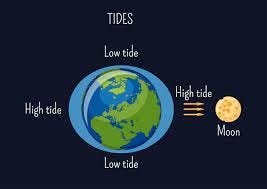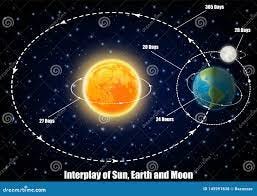Tides & Tidal Flow explained for Sea Swimmers
Time and tide, as they say, waits for no man and it’s time to understand tides!
The sea is constantly moving, whether it be huge ocean currents caused by changing sea temperatures and salinity, to the waves on the surface caused by the wind or the changing tides caused by the moon and the sun. It is important for sea swimmers to understand the movement of the water to plan safe swims.
Most of the surface of the earth is covered in water and the majority of that is our oceans and seas. The gravitational pull of the earth keeps the water on the surface of our planet, but the moon, and to a lesser degree the sun, also have a gravitational pull which affects the movement of that water too.
To understand how tides are created you need to understand the orbit of the moon around the earth and the earth’s orbit around the sun. Don’t worry too much if this doesn’t sink in. The rules it creates are as old as time so as long as you understand ‘what and ‘when’ rather that the ‘how’ and ‘why’ you will still be able to plan a safe swim!
What are tides?
When the water or sea level rises to it’s highest point it is called high tide or high water. Conversely, when it is at it’s lowest point it is called low tide or low water. The ebb and flow or rise and fall of the tides is known as the tidal cycle. Where I swim in Brighton UK we have what is known as a semi-diurnal tidal cycle which means we have two high tides and two low tides in a 24 hours period. At low tide the sandy seabed is revealed and the water is shallow, at high tide the water is further up the beach and covers the steep shingle and it is deep. The movement between these points creates currents called tidal flow or streams.
How tides are created?
In it’s simplest form, they are created by the gravitational pull of the moon. This lunar gravitational pull literally pulls the water in the oceans and seas towards it causing a bulge of deeper water. As the earth rotates daily where the moon is, in relation to where we swim on earth will dictate the tide state. So if the moons gravitational pull is at its greatest over the UK at 12pm this will be high tide or high water.
In more detail…… you may need to reread this part a few times or skip it altogether!
So, the earth orbits the sun, and the moon orbits the earth. The earth and the moon also rotate on an axis. So at any given point of time in the day where the three are in relation to each other will exert a gravitational force on our oceans and seas. And where you are sea swimming on planet earth at any given time will have a tidal state based on these forces.
‘Roughly’ Daily tides
Let’s start with the gravitational relationship between the moon and the earth based on rotation and orbit. It takes roughly 24 hours for the earth to rotate a full 360 degrees on it’s axis. During this time we will move from night to day and back again because where we are on earth in relation to the light of the sun will changeover 24 hours. This is also true of the moon, which although the light it exhibits is minimal, it’s gravitational pull on the oceans is not. So during this time we will move from high water to low water and back again because where we are on earth in relation to the gravitational pull will change over 24 hours. The more precise time between each high water in the UK is 12hours and 23 minutes. And a complete diurnal tidal cycle takes 24 hours and 46 minutes. So the tide times will be about ¾ of an hour later each day.
What this means for sea swimmers; is that roughly twice a day the sea will be further up or lower down the beach and the depth of the water will change. In many places the water is to shallow at low water to swim. Get to know your swim spot at all tide states to understand if there will be enough depth to swim.
Keep reading with a 7-day free trial
Subscribe to Seabirds’s Substack to keep reading this post and get 7 days of free access to the full post archives.








